Charles E W Bean, Diaries, AWM38 3DRL 606/59/1 - September 1916 - Part 5
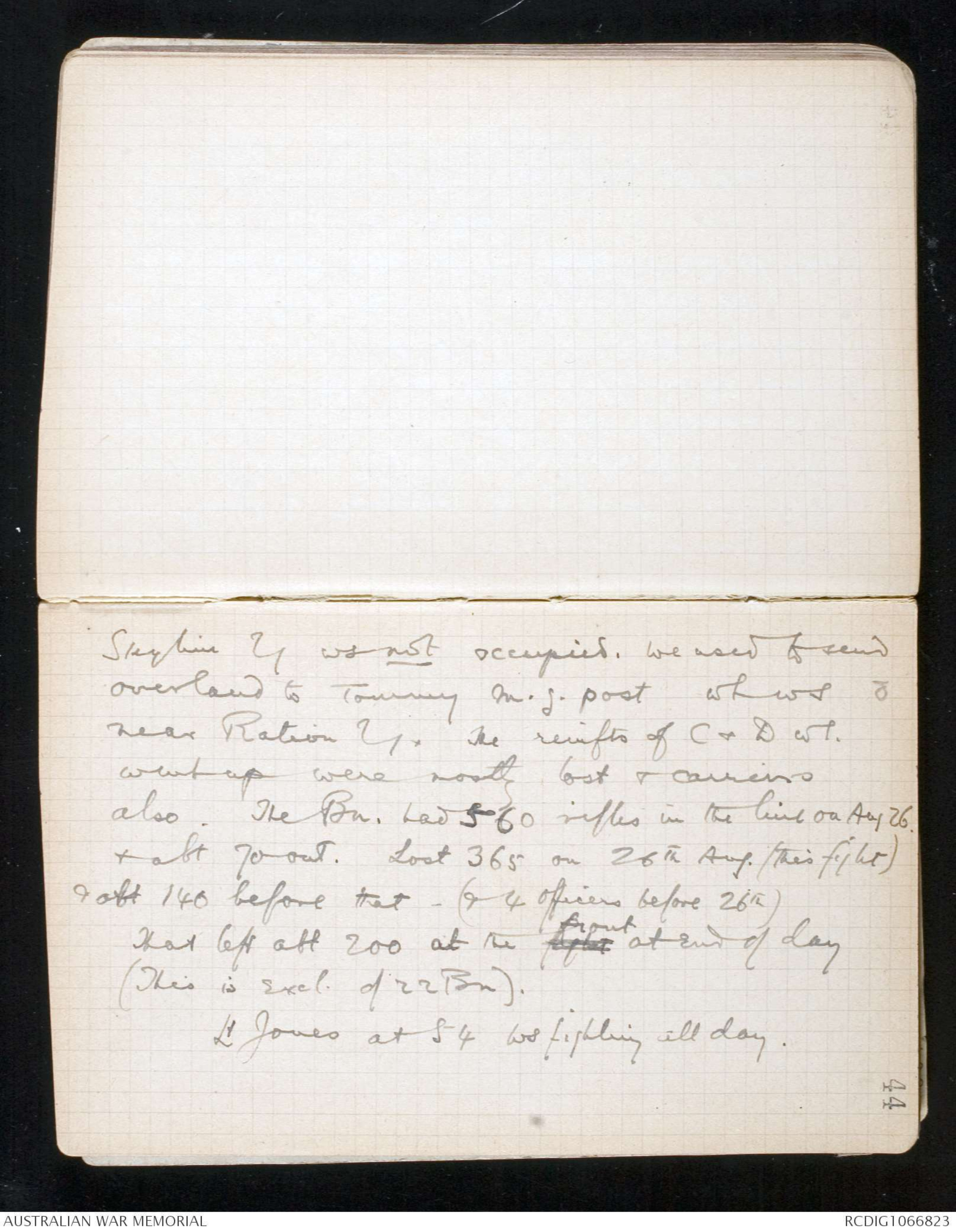
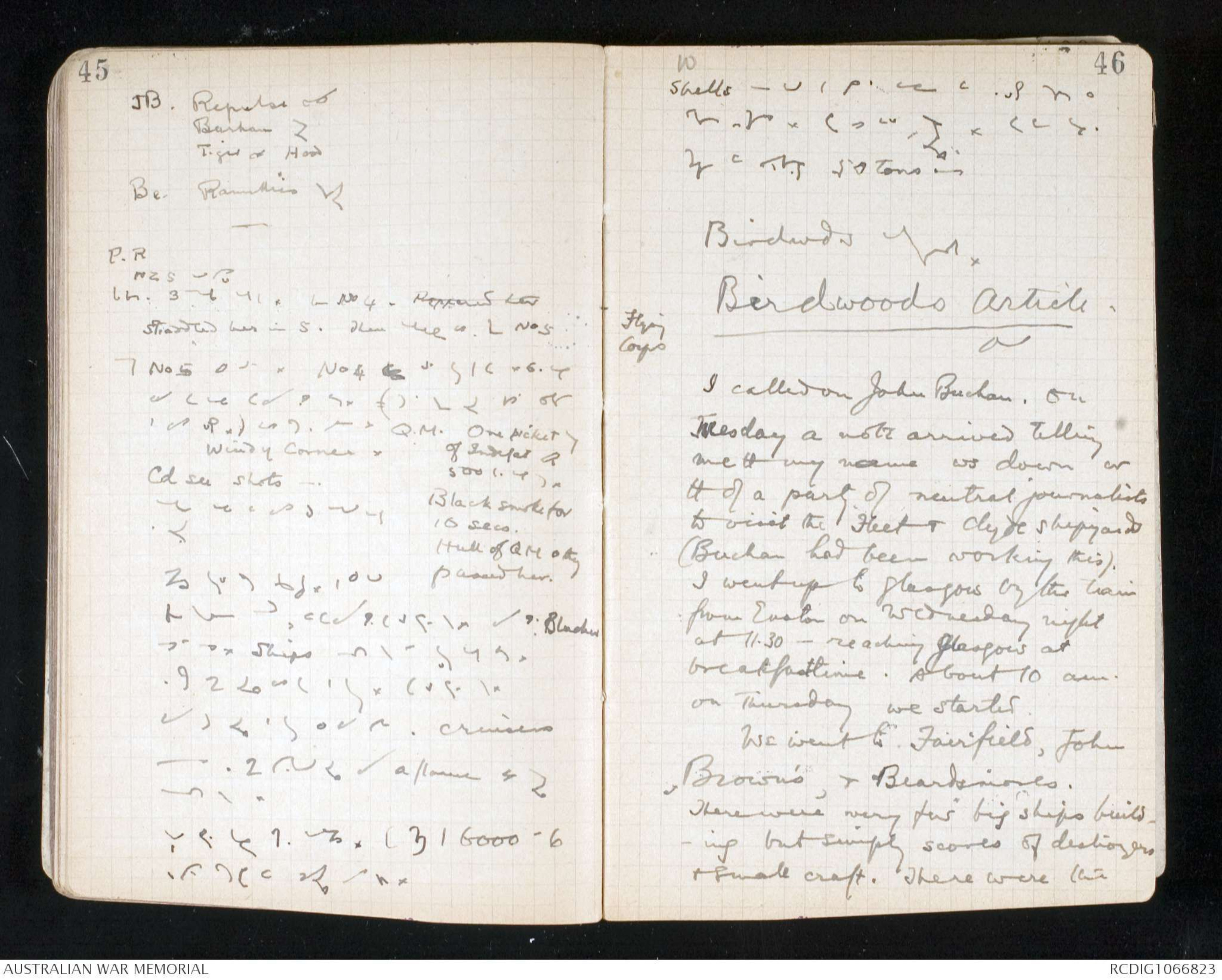
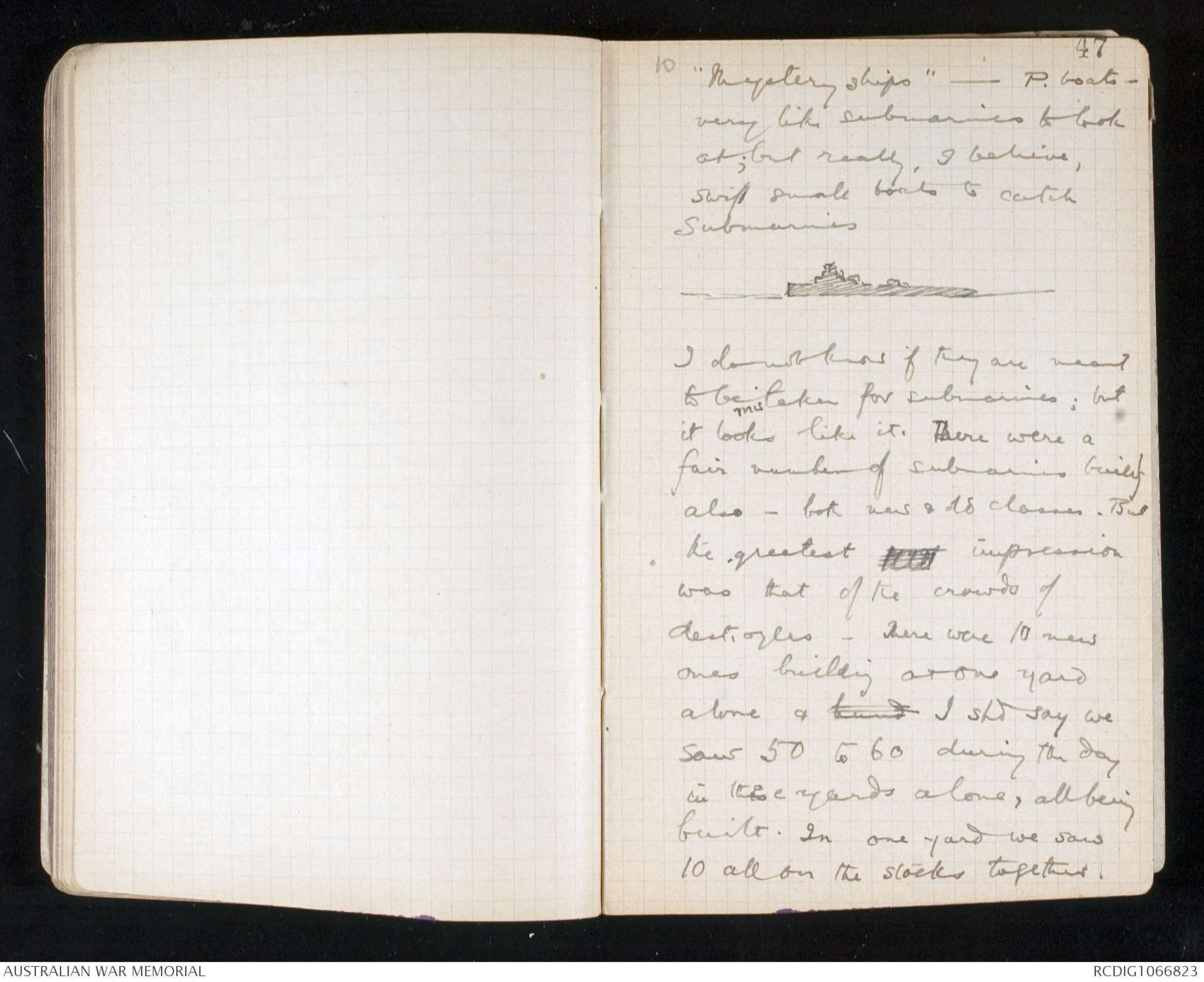
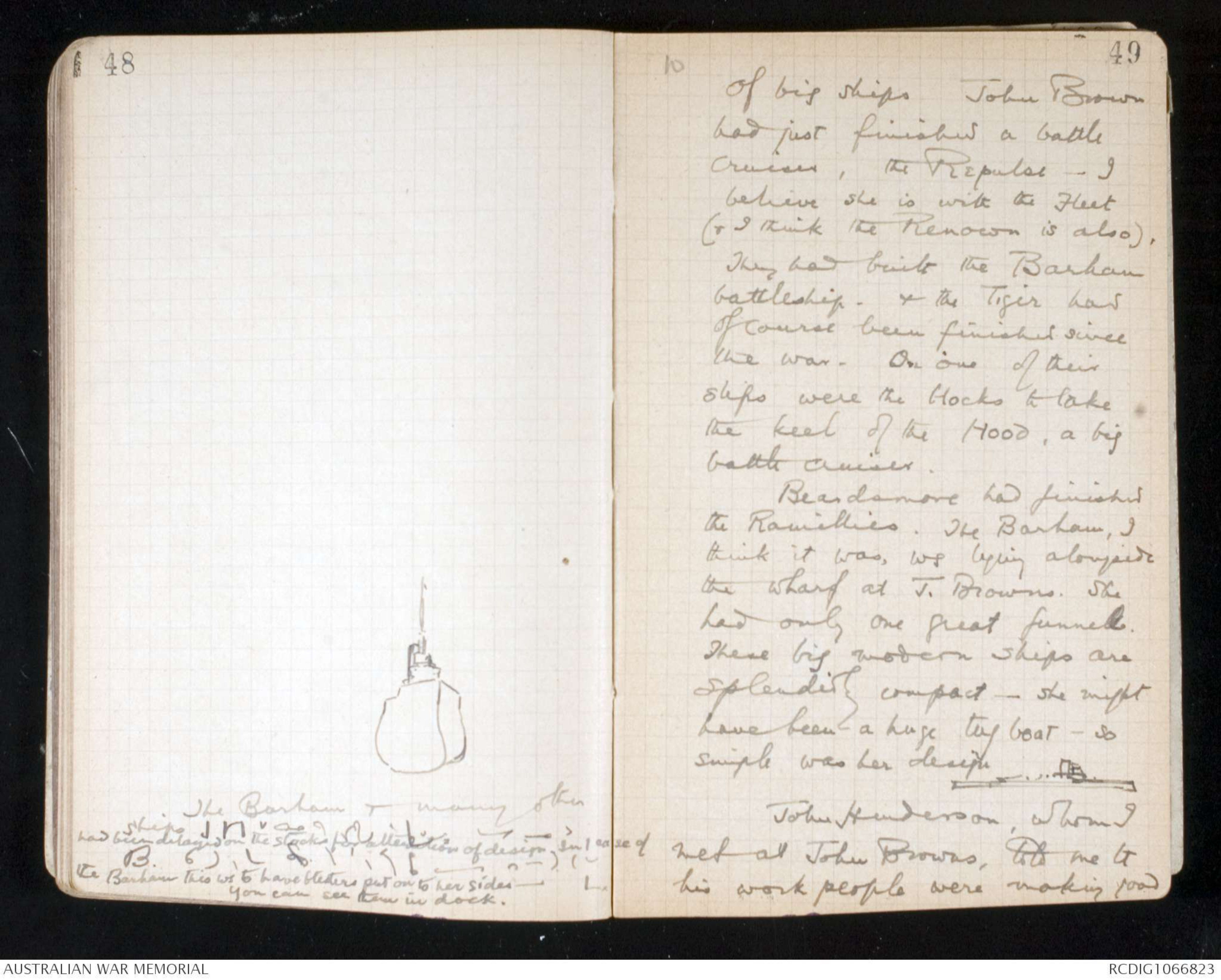
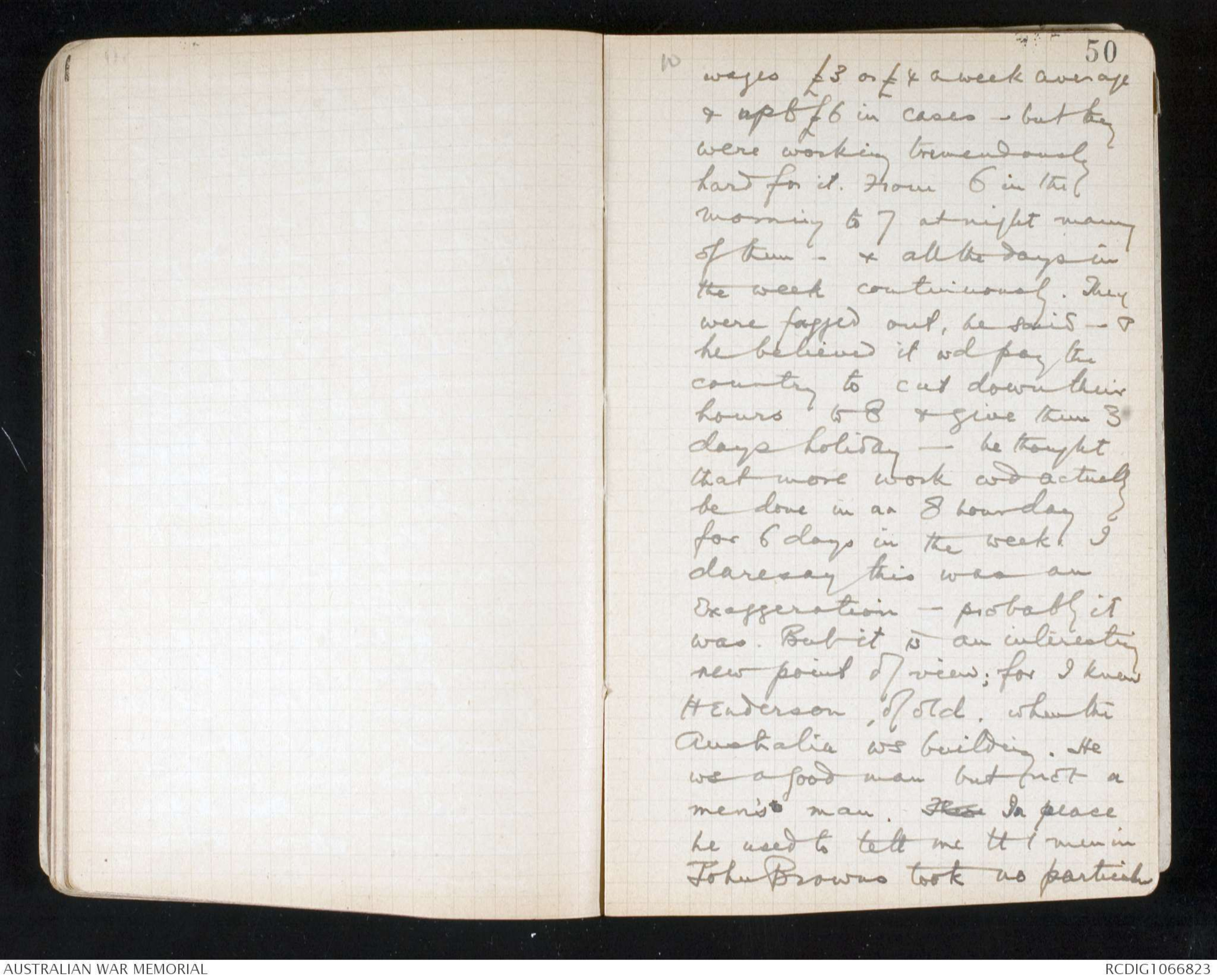
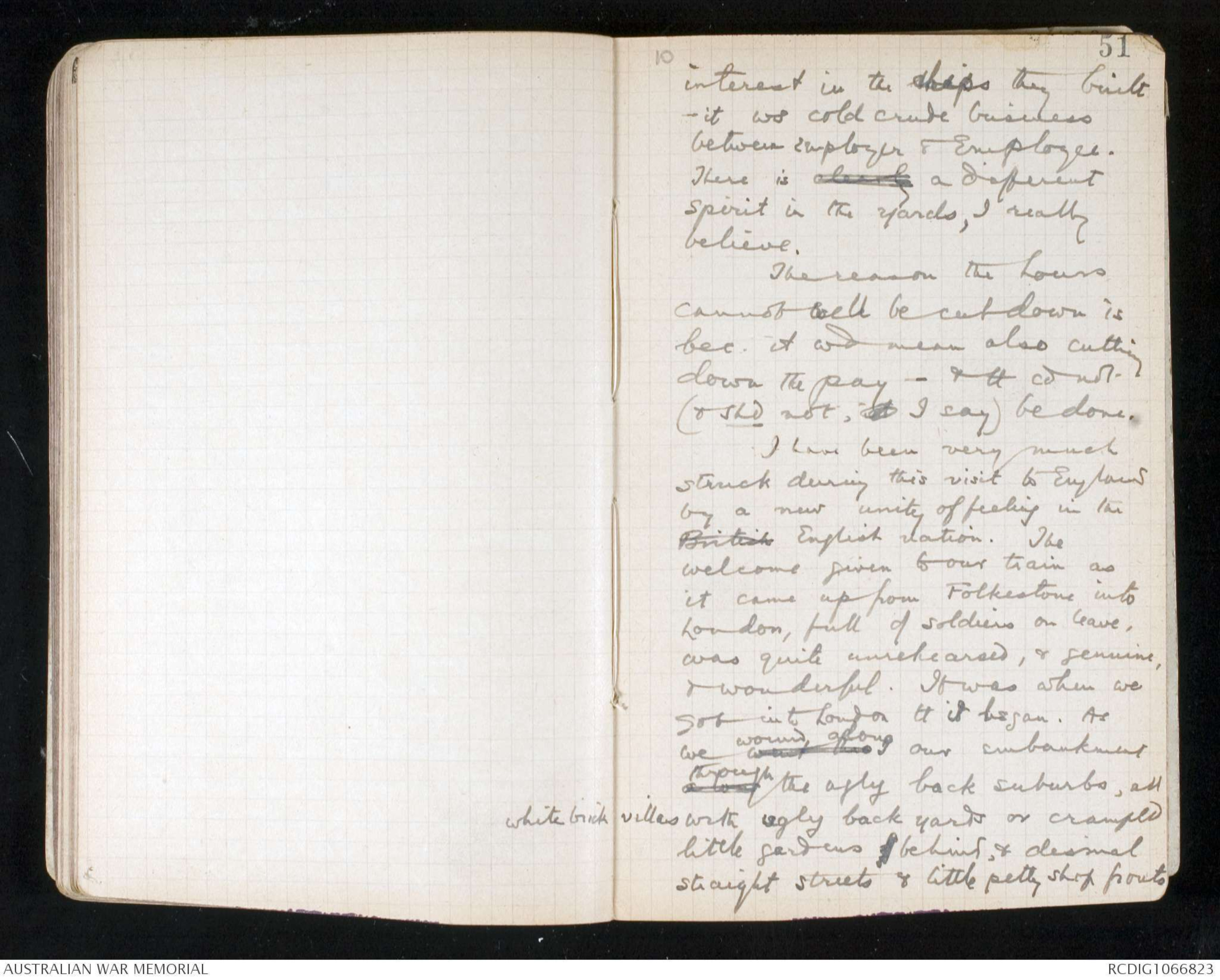
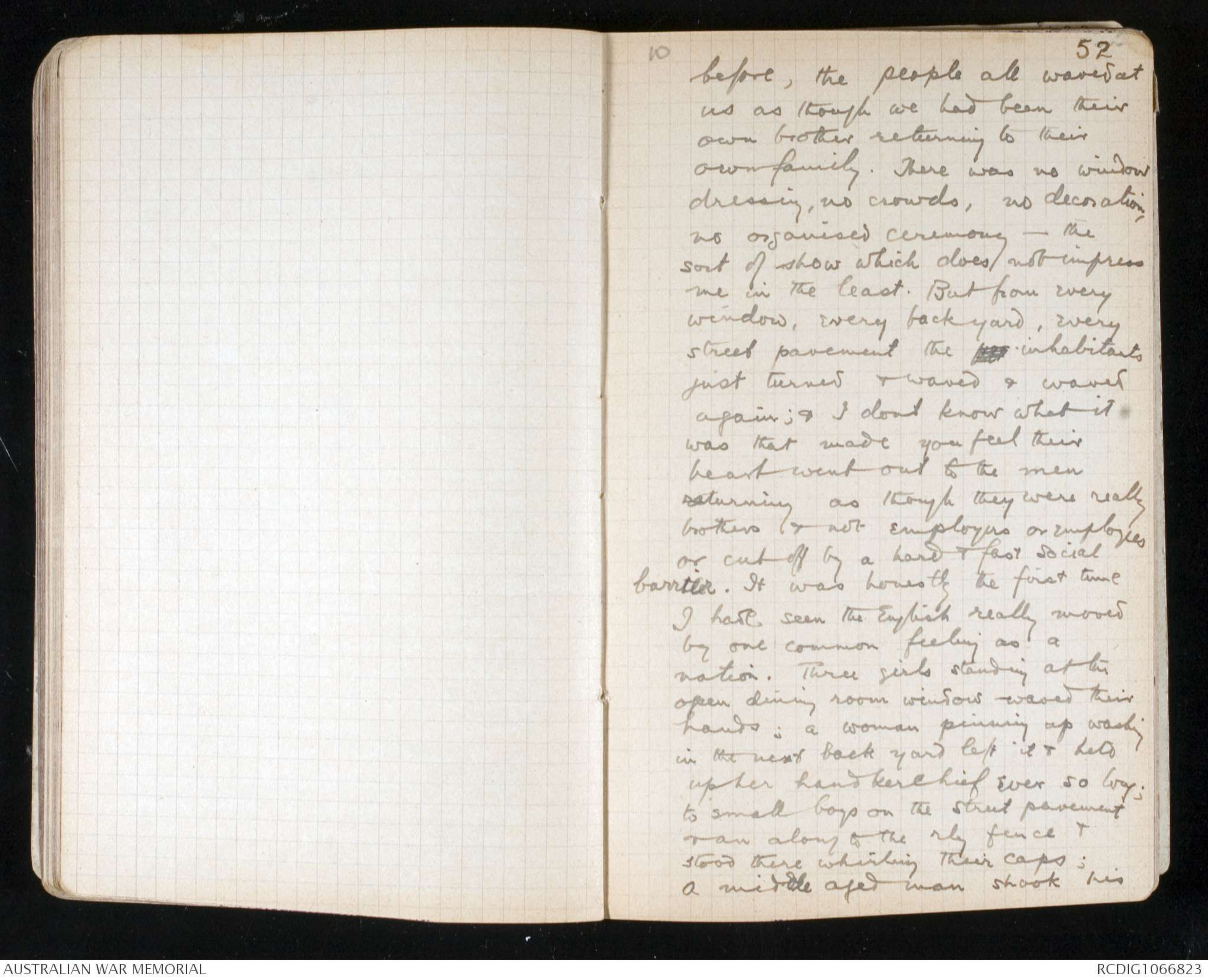
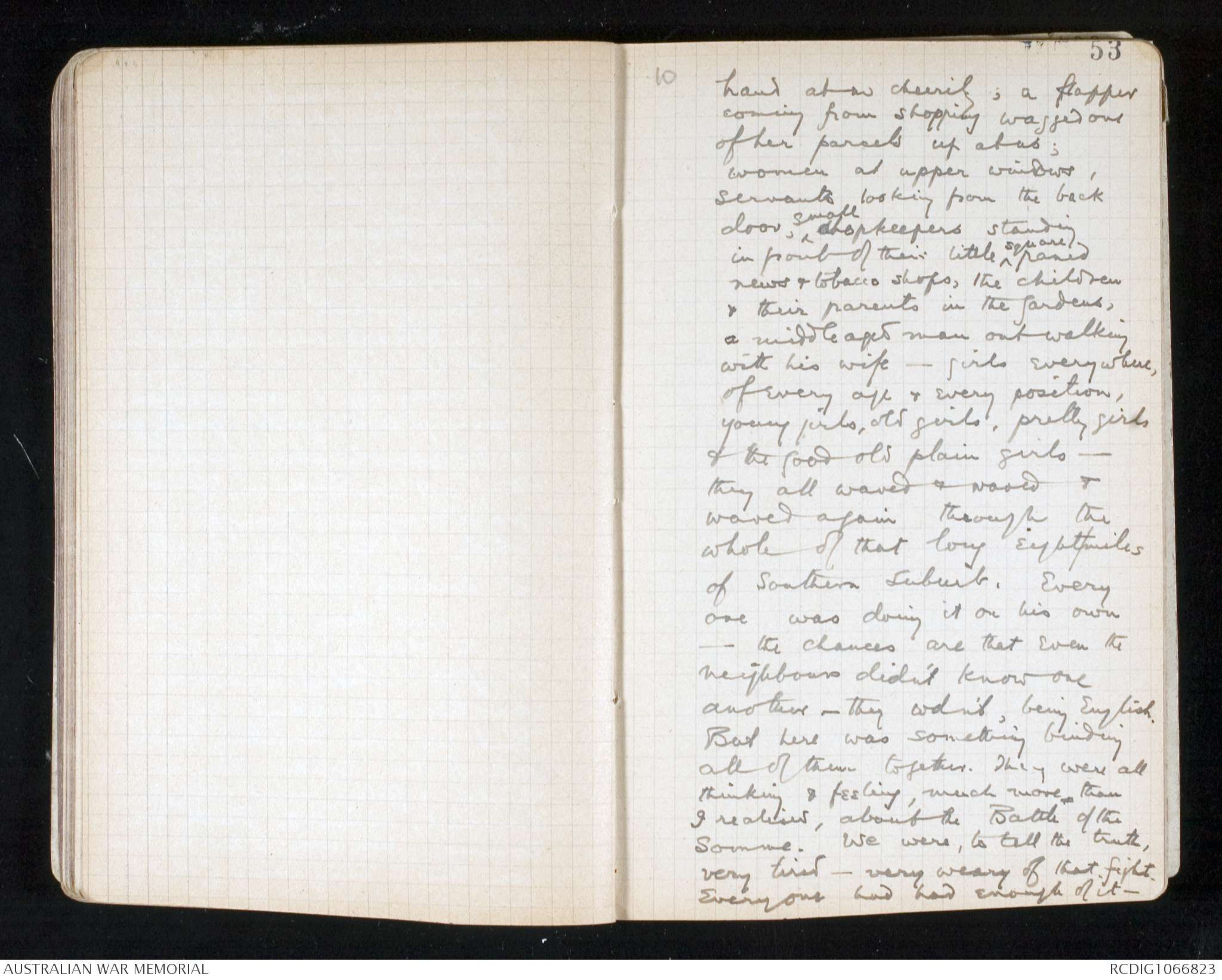
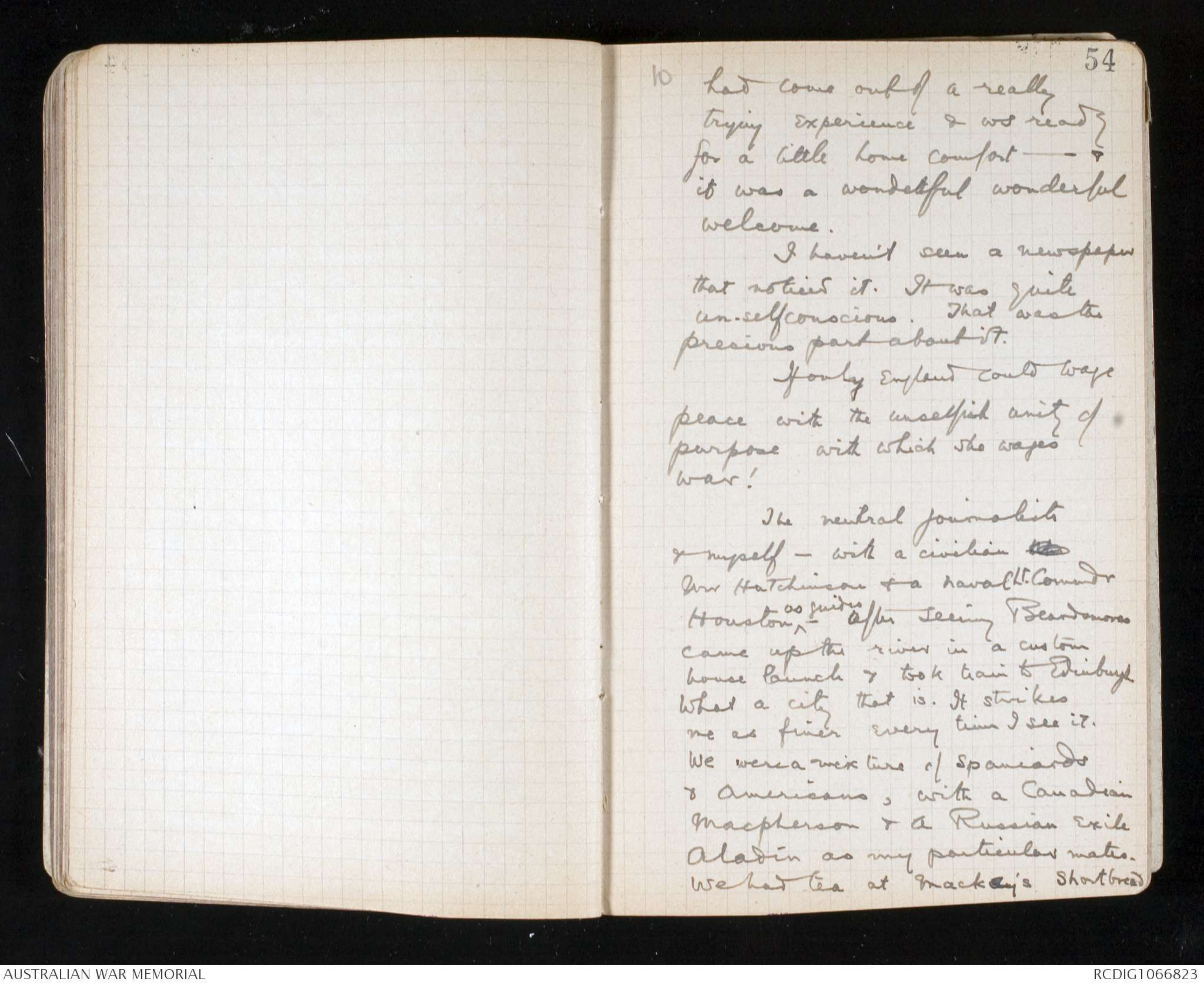
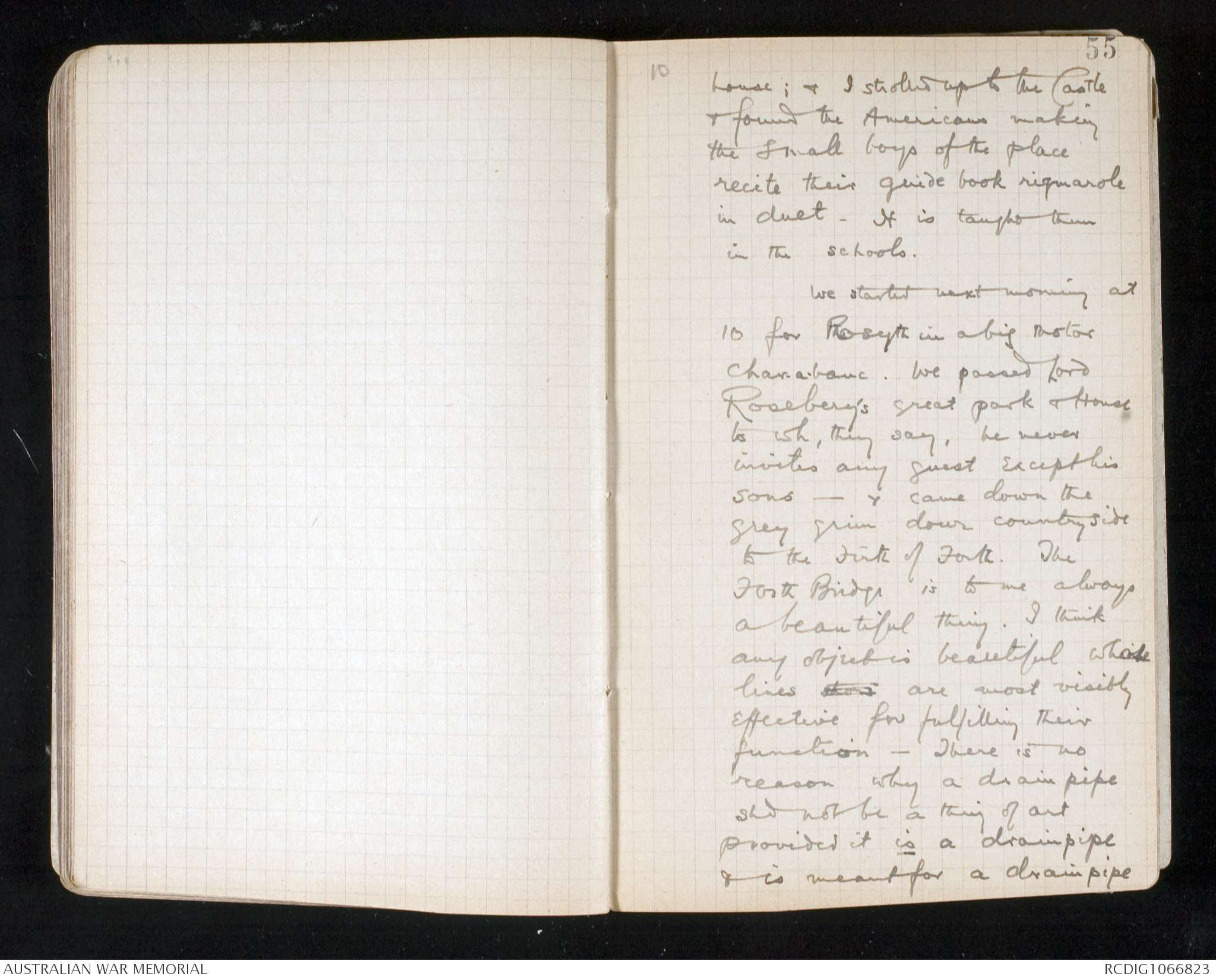
10
44
Skyline trench ws not occupied. We used to send
overland to Tommy m.g. post wh ws
near Ration trench. The reinfts of C & D wh.
went up were mostly lost & carriers
also. The Bn. had 560 rifles in the line on Aug 26.
& abt 70 out. Lost 365 on 26th Aug. (this fight)
& abt 140 before that - (& 4 officers before 26th)
That left abt 200 at the fight front at end of day
(This is excl. of 22 Bn).
Lt Jones at 54 ws fighting all day.
45
JB. Repulse [shorthand]
Barham [shorthand]
Tiger [shorthand] Hood
P.R.
NZs [shorthand]
[shorthand]. No4 Happened
Straddled lines in S. Then [shorthand] No 5.
[shorthand] No5 [shorthand] No 4 [shorthand]
[shorthand] Q.M. One picket trench
Windy Corner. of Indefat
500 [shorthand]
Cd see shots Black smoke for
[shorthand] 10 secs.
Hull of QM & they
passed her.
[shorthand] Blucher
[shorthand]ships [shorthand]
[shorthand] cruisers
[shorthand] 6000 - 6
[shorthand]
10
46
shells [shorthand]
[shorthand] 50 tons [shorthand]
Birdwds [shorthand]
Birdwoods Article
[*Flying Corps*]
I called on John Buchan. On
Tuesday a note arrived telling
me tt my name ws down w
tt of a party of neutral journalists
to visit the Fleet & Clyde shipyards
(Buchan had been working this).
I went up to Glasgow by the train
from Euston on Wednesday night
at 11.30 - reaching Glasgow at
breakfast time. About 10 a.m.
on Thursday we started.
We went to Fairfield, John
Brown's, & Beardsmores.
There were very few big ships building
but simply scores of destroyers
& small craft. There were the
10
47
"Mystery ships" - P. boats-
very like submarines to look
at; but really, I believe,
swift small boats to catch
submarines
Hand drawn diagram – see original
I do not know if they are meant
to be mistaken for submarines; but
it looks like it. There were a
fair number of submarines buildg
also - both new & old classes. But
the greatest xxxx impression
was that of the crowds of
destroyers - there were 10 new
ones building at one yard
alone & hund I shd say we
saw 50 to 60 during the day
in these yards alone, all being
built. In one yard we saw
10 all on the stocks together.
48
Hand drawn diagram – see original
The Barham & many other
ships
had been delayed on the stocks for alteration of design. In the case of
the Barham this ws to have blasters put on to her sides
- you can see them in dock.
10
49
of big ships. John Brown
had just finished a battle
cruiser, the Repulse - I
believe she is with the Fleet
(& I think the Renown is also).
They had built the Barham
battleship - & the Tiger had
of course been finished since
the war. On one of their
slips were the blocks to take
the keel of the Hood, a big
battle cruiser.
Beardsmore had finished
the Ramillies. The Barham, I
think it was, ws lying alongside
the wharf at J. Browns. She
had only one great funnel.
These big modern ships are
splendidly compact - she might
have been a huge tug boat - so
simple was her design.
Hand drawn diagram – see original
John Henderson, whom I
met at John Browns, told me tt
his work people were making good
10
50
wages of £3 or £4 a week average
& up to £6 in cases - but they
were working tremendously
hard for it. From 6 in the
morning to 7 at night many
of them - & all the days in
the week continuously. They
were fagged out, he said - &
he believed it wd pay the
country to cut down their
hours to 8 & give them 3
days holiday - he thought
that more work wd actually
be done in an 8 hour day
for 6 days in the week. I
daresay this was an
exaggeration - probably it
was. But it is an interesting
new point of view; for I knew
Henderson, of old, when the
Australia ws building. He
ws a good man but not a
men's man. There In peace
he used to tell me tt / men in
John Browns took no particular
10
51
interest in the ships they built
- it ws cold crude business
between employer & employee.
There is clearly a different
spirit in the yards, I really
believe.
The reason the hours
cannot well be cut down is
bec. it wd mean also cutting
down the pay - & tt cd not
(& shd not, it I say) be done.
I have been very much
struck during this visit to England
by a new unity of feeling in the
British English nation. The
welcome given to our train as
it came up from Folkestone into
London, full of soldiers on leave,
was quite unrehearsed, & genuine,
& wonderful. It was when we
got into London tt it began. As
we went thro wound along our embankment
along through the ugly back suburbs, all
white brick villas with ugly back yards or cramped
little gardens of behind, & dismal
straight streets & little petty shop fronts
10
52
before, the people all waved at
us as though we had been their
own brother returning to their
own family. There was no window
dressing, no crowds, no decoration,
no organised ceremony - the
sort of show which does not impress
me in the least. But from every
window, every backyard, every
street pavement the peo inhabitants
just turned & waved & waved
again; & I dont know what it
was that made you feel their
heart went out to the men
returning as though they were really
brothers & not employers or employees
or cut off by a hard & fast social
barrier. It was honestly the first time
I have seen the English really moved
by one common feeling as a
nation. Three girls standing at the
open dining room window waved their
hands; a woman pinning up washing
in the next back yard left it & held
up her handkerchief ever so long;
to small boys on the street pavement
ran along to the rly fence &
stood there whirling their caps;
a middle aged man shook his
10
53
hand at us cheerily, a flapper
coming from shopping wagged one
of her parcels up at us;
women at upper windows,
servants looking from the back
door, ^small shopkeepers standing
in front of their little ^square paned
news & tobacco shops, the children
& their parents in the gardens,
a middle aged man out walking
with his wife - girls everywhere,
of every age & every position,
young girls, old girls, pretty girls
& the good old plain girls -
they all waved & waved &
waved again through the
whole of that long eight/miles
of Southern suburb. Every
one was doing it on his own
- the chances are that even the
neighbours didn't know one
another - they wdn't, being English.
But here was something binding
all of them together. They were all
thinking & feeling much more than
I realised, about the Battle of the
Somme. We were, to tell the truth,
very tired - very weary of that fight.
Everyone had had enough of it -
10
54
had come out of a really
trying experience & ws ready
for a little home comfort - &
it was a wonderful wonderful
welcome.
I haven't seen a newspaper
that noticed it. It was quite
un-selfconscious. That was the
precious part about it.
If only England could wage
peace with the unselfish unity of
purpose with which she wages
war!
The neutral journalists
& myself - with a civilian who
Jim Hutchinson & a Naval Lt. Commandr
Houston ^as guides - after seeing Beardsmores
came up the river in a custom
house launch & took train to Edinburgh.
What a city that is. It strikes
me as finer every time I see it.
We were a mixture of Spaniards
& Americans, with a Canadian
Macpherson & a Russian exile
Aladin as my particular mates.
We had tea at Mackey's Shortbread
10
55
house; & I strolled up to the Castle
& found the Americans making
the small boys of the place
recite their guide book rigmarole
in duet - It is taught them
in the schools.
We started next morning at
10 for Rosyth in a big motor
Char-a-banc. We passed Lord
Rosebery's great park & House
to wh, they say, he never
invites any guest except his
sons - & came down the
grey grim dour countryside
to the Firth of Forth. The
Forth Bridge is to me always
a beautiful thing. I think
any object is beautiful whose
lines show are most visibly
effective for fulfilling their
function - There is no
reason why a drain pipe
shd not be a thing of art
provided it is a drainpipe
& is meant for a drainpipe.
 Deb Parkinson
Deb ParkinsonThis transcription item is now locked to you for editing. To release the lock either Save your changes or Cancel.
This lock will be automatically released after 60 minutes of inactivity.